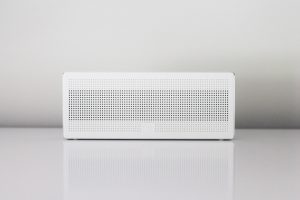A well-maintained air conditioner will run quietly and efficiently to keep your home comfortable. A reliable air conditioner is one you don’t have to worry about. However, when it’s time to maintain, repair or replace your system, it helps to understand how your air conditioner works. Here are some central air basics to bear in mind.
Central Air Basics
This article will explain the basic components of a central AC and how they work together to keep your home comfortable. We’ll break down the refrigeration cycle, which is the basic operation of an AC and how the various parts work together.
The Refrigeration Cycle
- Powered by electricity, the refrigerant moves through the refrigeration lines between the outside unit and the indoor unit.
- Warm air is pulled by a motorized fun from inside your premises to the ductwork.
- Refrigerant then absorbs heat from the air when it’s pumped to the interior evaporator coil from the exterior compressor coil.
- The cooled air is then pushed to the vents throughout your home through connecting ducts thus lowering the interior temperature.
- The process is repeated, providing a consistent method of keeping you cool.

Parts of a Central AC System
Knowing a little about the parts that make up an AC can help you to get a better sense of how your air is cooled. A central AC is a split or two-part system that includes:
- The outdoor unit containing the compressor, condenser coil, a fan and electrical components
- The evaporator coil, which you’ll usually find on top of the gas furnace inside your home.
- A series of refrigeration lines or pipes that connect the outside and inside equipment.
- Refrigerant, the substance in the refrigeration lines that circulates throughout the indoor and outdoor unit.
- Ducts through which air gets into the various spaces inside your home
- A control system or thermostat to set your desired temperature
Benefits
A central air conditioner helps to keep your home comfortable during warm weather by lowering temperature and humidity levels
Cleaner air – as the AC draws air through air ducts from the various rooms in the house, air then passes through an air filter where airborne particles such as lint and dust are removed . The filtered air is then re-routed to the rooms through the air supply ducts, improving overall air quality.
Quitter operation – because the unit bearing the compressor is located outside the house, indoor noise levels are relatively much lower than that of a free-standing air conditioning unit, for example.
Bottom Line
In simple terms, the air conditioning process involves two actions that occur simultaneously, one outside your home and another inside your home. It simply removes heat from the indoor (evaporator coil) to the outdoor (condenser coil) using four basic components: The compressor, the evaporator, the expansion device and the refrigerant tube that connects these components. Once you understand how the basic refrigeration cycle works, it’s easier to understand how any air conditioner works. Always make sure to property maintain your AC unit as well.